![]()
|
Maps
Maps are the physical manifestation of how Western societies view land. Some of the maps below were drawn in the early colonial period as Europeans struggled to understand and claim North America. Other maps were created for this website and offer several different visual and geographical perspectives on the peoples and events connected to the 1704 raid on Deerfield. Click a map's image or name to view it. |
|
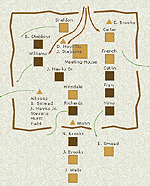 |
|
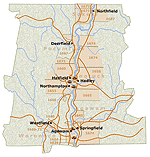 |
Settlement Patterns in the Connecticut River Valley |
 |
"Map of New France . . . made on its true meridian line by the Sieur de Champlain, Captain for the King," 1632 |
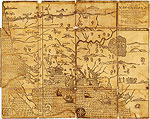 |
"A Map of New England," circa 1677 |
 |
"Carte du Canada ou de la Nouvelle France," 1703 |
|
"An Exact Mapp of New England and New York," 1702 |
|
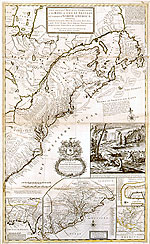 |
"A New and Exact Map of the Dominions of the King of Great Britain on the Continent of North America," 1711 |
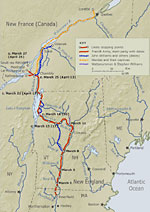 |
The March to Canada, 1704 |
 |
Wôbanaki Homelands, circa 1600 |
 |
Wendat Homeland, circa 1634 |
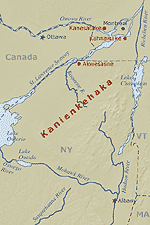 |
Kanienkehaka Homeland, circa 1600 |
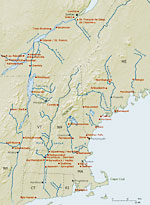 |
Colonial Northeast, circa 1660 - 1725 This map shows English and French settlements and centers of Native habitation at the time of the raid on Deerfield. |
 |
The Northeast Showing Native Homelands and Movements, circa 1650 - 1750 |
|
|
The Deerfield / Pocumtuck Area, circa 1550, 1700 and 1704 Images created from a 3D computer model of the area landscape that contrast the different styles of land use by the native Algonkian peoples and English settlers. |
![]()
About This Site
Resources
Glossary
Teachers' Guide
Site Map
How To
© 2020 PVMA / Memorial Hall Museum

